The debate of the better one between wood and plastic boards is unending among homeowners and kitchen enthusiasts. Such discussions never have an end because both plastic and wood-cutting boards have their features and advantages. At the same time, they both share their disadvantages.
Depending on how often you cook, I advise homeowners to have more than one cutting board in their kitchen. By doing this, each cutting board you have will get some specific duties and prevent cross contaminations.
Wood and plastic cutting boards are the most common types of cutting boards. This article will compare plastic and wood cutting boards, explaining their features, advantages, and disadvantages.
JUMP TO : Comparision Table | Plastic Cutting Board | Wood Cutting Boards | Wood And Plastic Cutting Boards Comparision | Bottomline |
- Wood cutting boards are more expensive than plastic cutting boards
- Wood cutting boards require a lot more maintenance than plastic cutting boards
- Bacteria can survive better on plastic cutting boards than their wood counterpart
- Wood cutting boards are more complex to clean than the plastic cutting boards
Quick Overview – A Comparison Table
| PARAMETER | PLASTIC CUTTING BOARDS | WOODEN CUTTING BOARDS |
| Weight | Lightweight | Heavyweight |
| Cost | Low Cost | Affordable |
| Durability | Less durable | Durable |
| Maintenance | Requires less maintenance | More maintenance required |
| Water absorption | Water-resistant | Absorbs water |
| Aesthetics | Colorful | Aesthetically pleasing |
| Knife Maintenance | Gentle on Knife sharp edge | It can dull sharp knife edge |
Are Plastic Cutting Boards Good?
Yes, when considering factors like price, easy usage, and maintenance, plastic cutting boards are great. As the name suggests, these boards have plastic materials and are usually lightweight. The boards generally have a low price, which makes them a common option.
Plastic boards are often better for cutting raw food that may have blood stains. Good examples are meat, fish, and other livestock. The plastic boards do not absorb water, so cutting raw food doesn’t affect the boards.
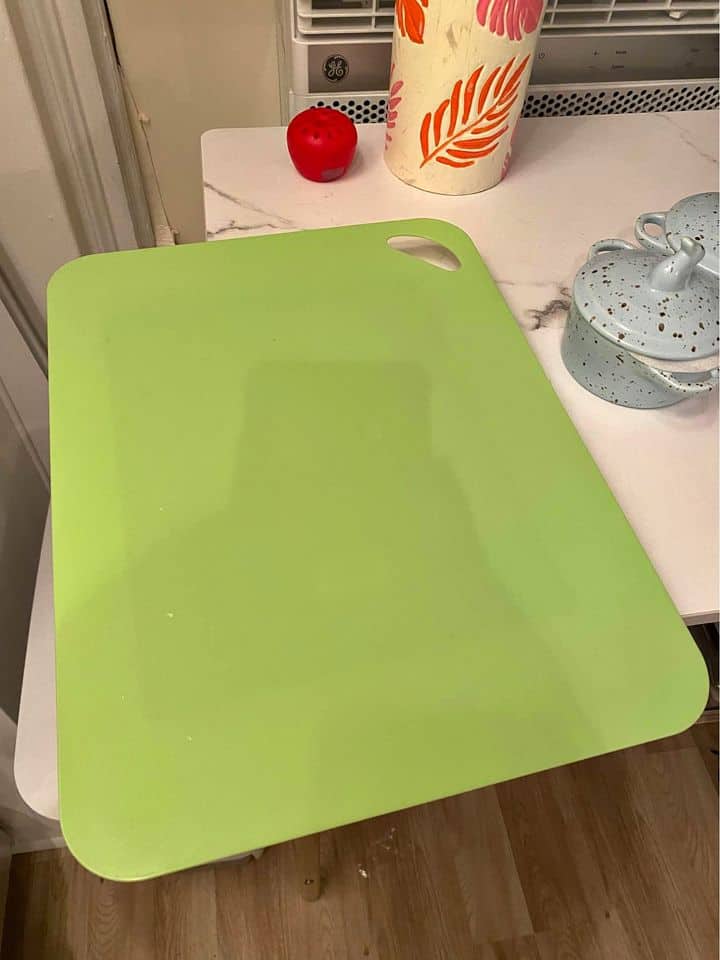
Plastic boards allow the manufacturers to color and paint the boards easily, and these colors indicate the preferred use. Most times, you may not precisely need all colors of the cutting boards if you are not a chef. However, do not use one board for every job.
Related Read: Acacia Vs. Bamboo Cutting Board
Some of the colors of plastic cutting boards and their respective uses include;
- Red for cutting all kinds of raw meat.
- Yellow for cutting all kinds of cooked meat and fish
- Brown for cutting food items that still have some dirt and soil on them. A good example is a potato
- Blue board is for cutting raw fish
- Green is for cutting green items like cabbage and vegetables, amongst others.
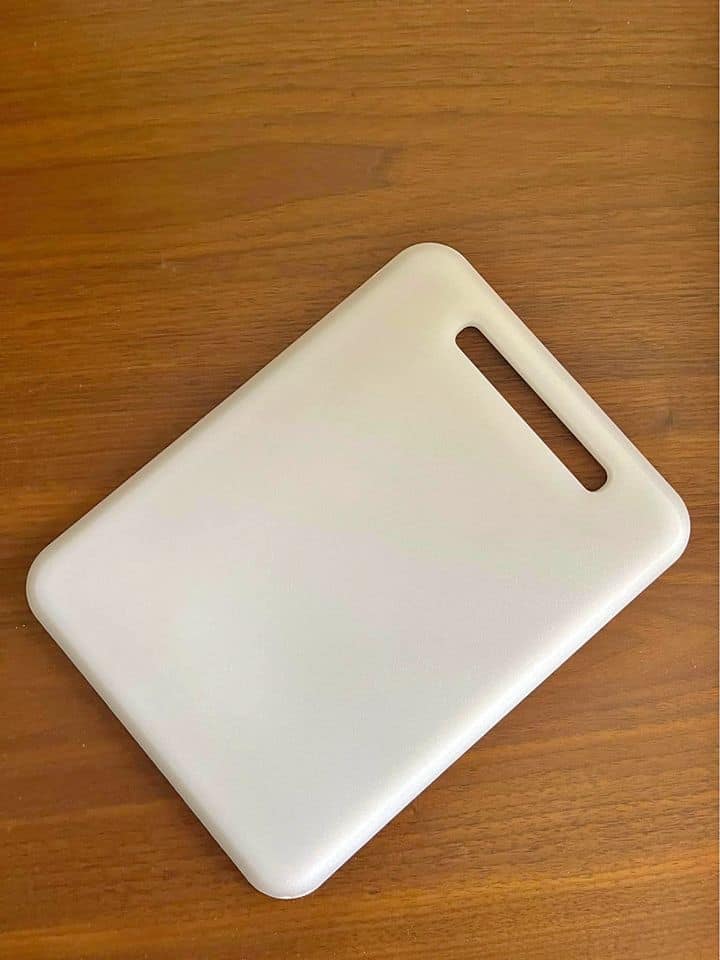
Plastic boards may be common in our kitchen today because of the low price. However, other advantages owning this board offers you.
Let’s examine the pros and cons of purchasing a plastic cutting board.
Pros
- Lightweight: Plastic is less heavy than wood, so the weight will differ even if a plastic and wood cutting board has identical dimensions.
- Easy to clean manually: It is easy to wash a plastic board manually or with a dishwasher.
- Knife Maintenance: Plastic boards are gentle on the sharp edge of the knife so that you can use the knife for an extended period.
- Affordable: You may save about 60% of your buying cost if you buy a plastic cutting board instead of a hardwood cutting board.
- Portable: Carrying a plastic cutting board into such kitchens is an excellent idea because the board does not have weight.
Cons
- Unsafe with bacteria: Bacteria tend to survive better on plastic boards than their wooden counterparts, according to Daily Mail.
- Quicker replacement: Over time, a plastic board’s surface will be rough with many knife edges, and you will need to replace it.
TIPS: Since plastic cutting boards are affordable, do not buy one. That way, you’ll buy more using time for each board.
Are Wood Cutting Boards Good?
Yes, wood cutting boards are also great for kitchen use, and they’re the first image that comes to you when you mention cutting boards.
A wood-cutting board is the most common type globally. The softer woods are weaker but will not affect the sharpness of your knives. The hardwood will withstand aggressive cutting but will affect the knife’s sharpness.
The features of a wood cutting board do not depend only on the wood type. The grain pattern of the wood board has a massive role in determining how well the board will fare while you use it. There are three main grain patterns for wood cutting boards;
- Face grain: The face grain wood cutting boards are the cheapest but the least common. Despite its affordable cost, users shy away from these boards because of their high warping potential. The grain pattern of these boards is more pronounced and can affect the cause of warping.
- End grain: Wood cutting boards with an end grain pattern are the most expensive type but also the most advantageous. These boards don’t have a grain pattern, as they form through joining multiple wood cross sections. Making wood cutting boards with this pattern is longer, and as such, it is more expensive.
- Edge grain: The edge grain is the most common type of wood cutting board. The pattern emancipates from the cutting process and joins the edges. Usually, you can see a single-grain pattern on the face of these boards.
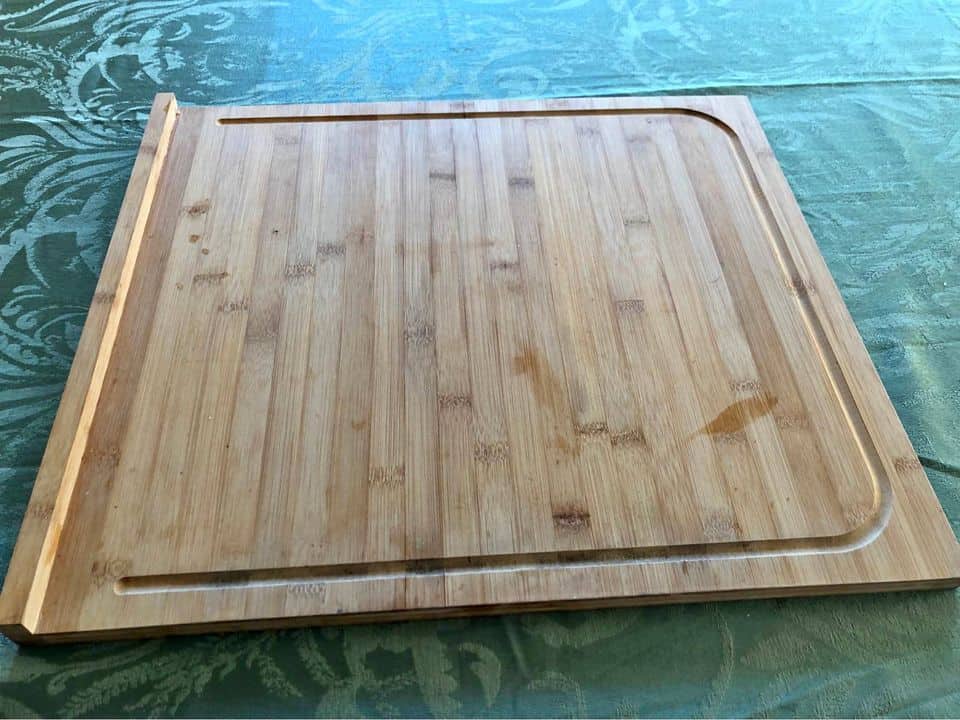
CAUTION: The grain pattern is important, but you should also consider the type of wood, as softer woods are more prone to cracking.
Different types of wood cutting boards exist, given the many wood variations. The variety can make you wonder if the wood is good for cutting boards.
LLet’scheck out some of the pros and cons of wood-cutting boards
Pros
- Strong and sturdy: Wood is a strong material that can withstand the force of a knife so that you can cut the most slippery and hard food items.
- Longevity: If you maintain your wood-cutting board correctly, it can last up to a decade.
- Beautiful: Wood cutting boards come in different shapes and look nice aesthetically.
- Safe for cooking: Wood cutting boards absorb liquid, but bacteria can’t survive on a wooden board as it does on plastic.
- More cutting space: Wood cutting boards are usually huge, so you have more cutting room for stubborn and large food items.
Cons
- Heavyweight: Wood is typically a heavy material, and most cutting boards follow suit.
- It can dull knives: Wood cutting boards, especially the ones made of hardwood, can dull your knives.
- Harder to clean: Wood absorbs liquid, so it can be harder to clean after using it.
- Requires more maintenance: Wood cutting boards require a lot of maintenance procedures like seasoning, cleaning, and sanitization.
Is Wood Or Plastic Better for Cutting boards: Head-to-Head Comparison
Wood and plastic cutting boards have advantages and disadvantages, so there’s a better one. It is always better to have both options available in your kitchen since they serve different purposes. Let’s compare based on the following parameters;
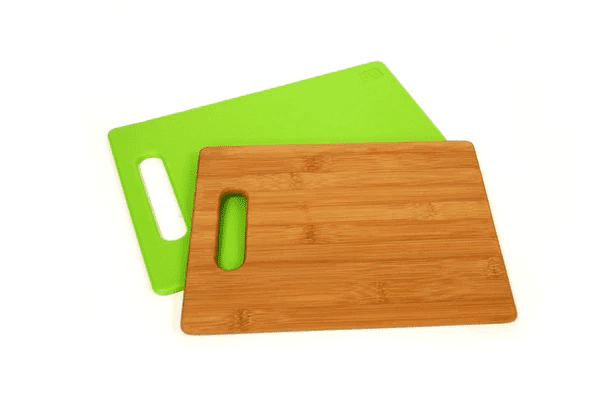
Source: Rajuc.com
Appearance
Both wood and plastic cutting boards have a presentable appearance. You can use both boards for aesthetic purposes.
The plastic boards are better if you tag beautiful as colorful because they offer more colors. Plastic boards have different colors, including yellow, green, red, etc., and each color indicates the boards’ use.
On the other hand, wood cutting boards usually have the same brown wooden color. However, it comes in different shapes and sizes, which makes it more aesthetically pleasing.
NOTE: Functionality is more important than beauty when choosing a cutting board.
Verdict: On appearance, both plastic and wood cutting boards look great. However, wood cutting boards have more shape options, and can be more attractive for aesthetic purposes only.
Size and Weight
A cutting board can be stationary or mobile, depending on how often you cook. As a chef, the weight and size of your cutting board matter since you will need to carry it around at intervals.
One of the best things about plastic cutting boards is their lightweight. Most times, the plastic cutting boards will be better than the wood cutting boards. This reduced weight of the plastic boards makes it more convenient during use and when you need to wash.
On the other hand, wood-cutting boards are usually heavy, and it is arduous to move them from one place to the other. Also, wood-cutting boards can take up a lot of space.
Alternatively, plastic boards are more portable and use smaller spaces. However, it is essential to know that buying the smallest plastic cutting board is not always a good idea, as you may need to cut large items.
Verdict: Plastic boards are usually smaller than wood boards in both weight and size, so they are better if you want to move the board around and manage space.
Durability and Longevity
We all want to purchase cutting boards that can last long. While wood and plastic cutting boards perform great over time, wooden boards are better. Also, they are more durable than their plastic counterparts.
A wooden cutting board has the strength to resist the cutting force and knife sharpness. Plastic boards can take the force but will gradually show signs of wear.
Also Read: Is Teak Wood Good for Cutting Boards?
With proper maintenance, wood boards last longer. However, the maintenance processes can be stressful.
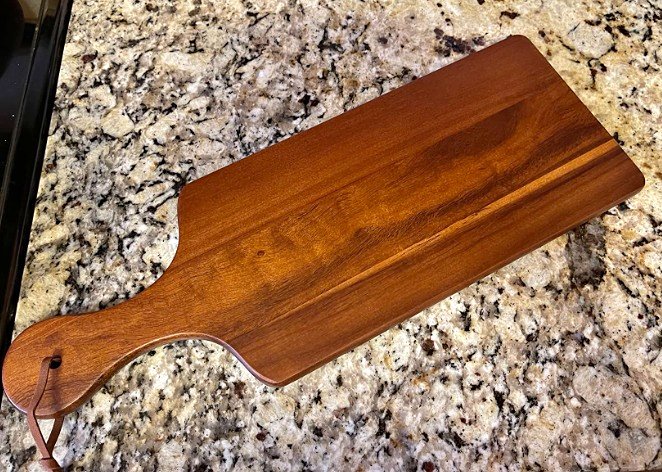
Verdict: In terms of durability and longevity, wood-cutting boards are stronger and can withstand cutting forces without holes. Also, with proper care and maintenance, they can last better than plastic cutting boards.
Maintenance
We all want to buy devices that bring peace as regards maintenance. You better buy a plastic board if that’s what you want.
The only maintenance required with a plastic cutting board is washing it after use.
However, a plastic cutting board does not have the hardest material yet. Hence, a sharp knife edge will easily make a hole and cut through the board. These holes make the board home for bacteria and other harmful things. But you can easily replace it since the boards are affordable.
On the other hand, wooden cutting boards absorb all kinds of moisture. If you want to stop the board from absorbing such humidity, you must season the board with oil at intervals.
The seasoning process requires washing and sanitizing the board before applying the oil. After consistent use and wash, the oil will fade, and you will need to reseason the board.
Verdict: Maintaining a plastic cutting board is easier than a wooden counterpart. Wood cutting boards require cleaning, sanitization, and oiling at intervals
Cost
Buying the right cutting board and saving money is usually a dream come true. If you are looking to save money, plastic boards are generally better.
On average, these plastic boards cost less than $35, while wooden boards cost less than $200.
Verdict; Plastic cutting boards are cheaper than wood cutting boards.
Cleaning the Board
A general rule of thumb is to clean your cutting boards immediately after cutting any item. However, plastic boards are a lot easier to clean than wooden boards.
First, this cutting board type can go into the dishwasher. So you don’t have to stress yourself after a challenging round of cooking.
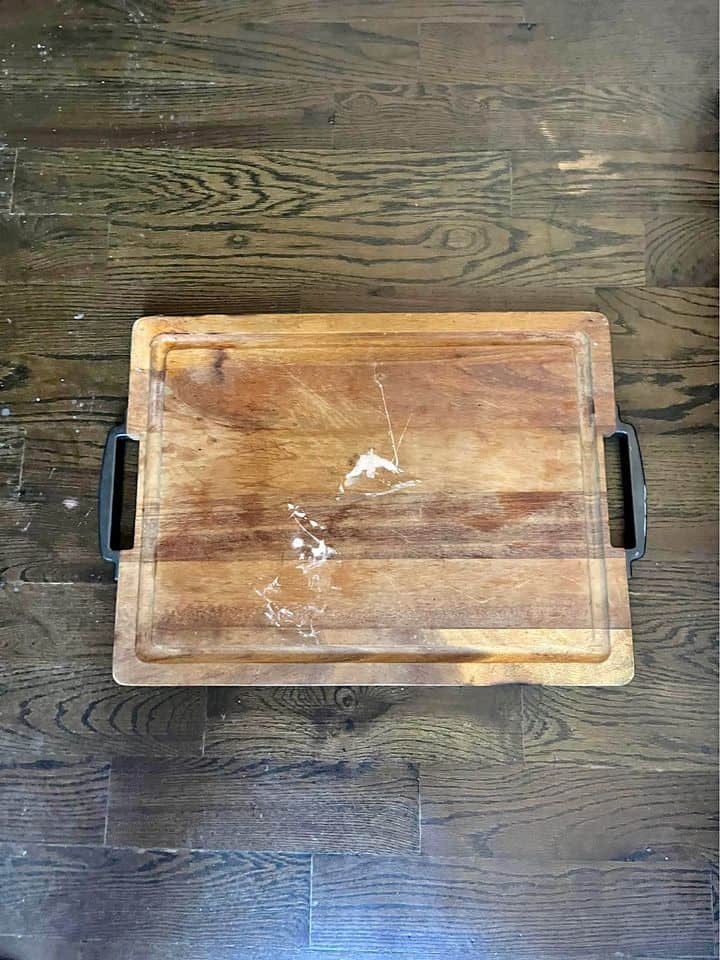
Also, if you decide to wash it manually, the plastic boards are easy to clean. With only soap and water, your board will come out clean. However, check the body for knife marks and clean those holes while washing a plastic board. These holes are a signal of the board being unsafe for use.
Wood boards, however, are a lot more complex to wash. First, you should never wash your wood cutting boards in a dishwasher. If you wash these boards inside a dishwasher, you risk cracks, warping, and melting the board. Under high heat and large water quantity, wood tends to crack and warp.
Also, a wood cutting board must be completely dry before subsequent use. Remember that wood absorbs water a lot, and water from the last use may still be within the wood board.
Lastly, cleaning a wooden board is not enough. At intervals, you will need to sanitize your wood board. You can use vinegar, hydrogen peroxide, or lemon for sanitization.
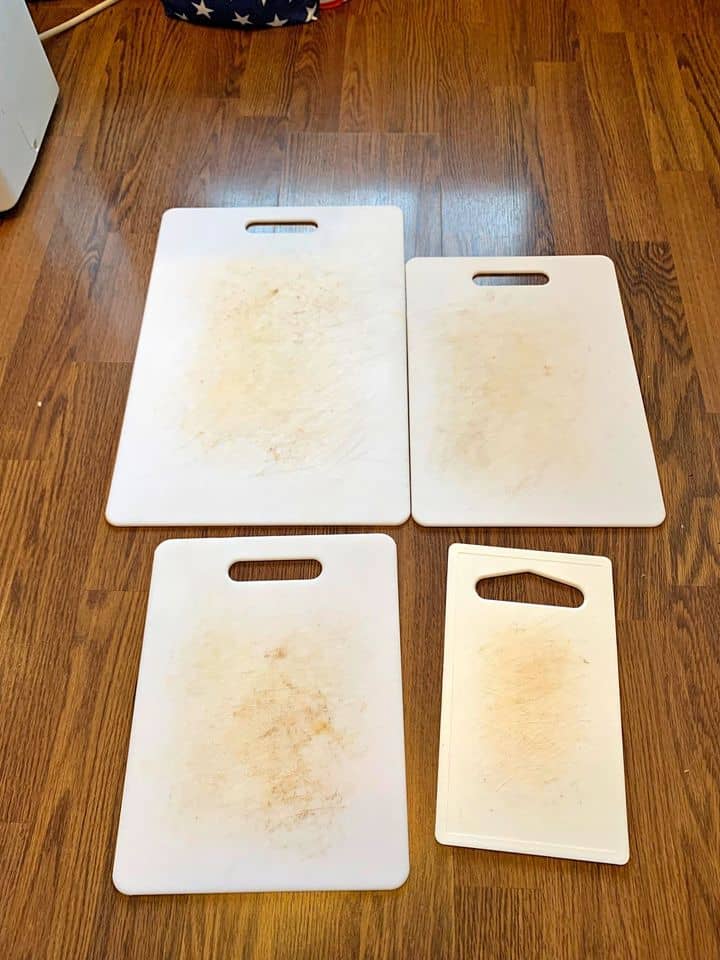
Verdict: Cleaning a plastic or wooden cutting board follows the same process with soap and water. The wooden boards require more, however, because the board absorbs liquids quickly.
Knife use
It can be very annoying to sharpen your knives frequently because of the board type. Plastic cutting boards are more gentle on the cutting edge of your knife than a wood cutting board.
While this won’t happen immediately, your knives may get dull if you keep cutting with a wood cutting board. The possibility of your wood board dulling your knives increases with how aggressively you cut.
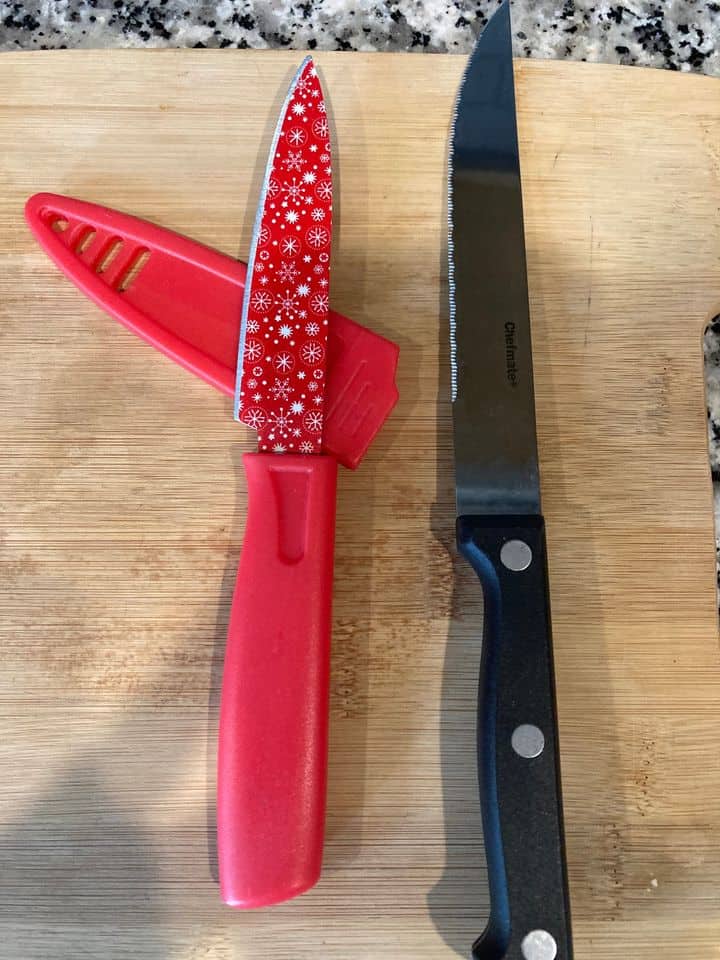
Verdict: If you want your knives to stay sharp even after an extended cutting period, plastic boards are a better pick.
Food Safety
Safety is crucial when it comes to making meals that you will consume. Both plastic and wooden cutting boards are relatively safe, but wooden boards are safer.
Plastic cutting boards tend to hold more bacteria than wood cutting boards, and they may multiply. So ensure that you wash immediately after cutting raw food on the board.
Also, as you cut with a plastic cutting board, the knives will create holes across the board. Bacteria from raw foods can easily find themselves in these holes and survive.
Wood, on the other hand, absorbs water, and it should generally be unsafe for kitchen use. That is because it can absorb liquid bacteria from raw and cooked foods.
However, according to research, a wood cutting board will genuinely absorb the liquid, but it kills the bacteria. The absorption and killing period may not last up to ten minutes. Hence, it is safer to use the wood-cutting board for food.
The general rule of thumb is always to wash your cutting boards after use, regardless of their property towards bacteria growth and survival.
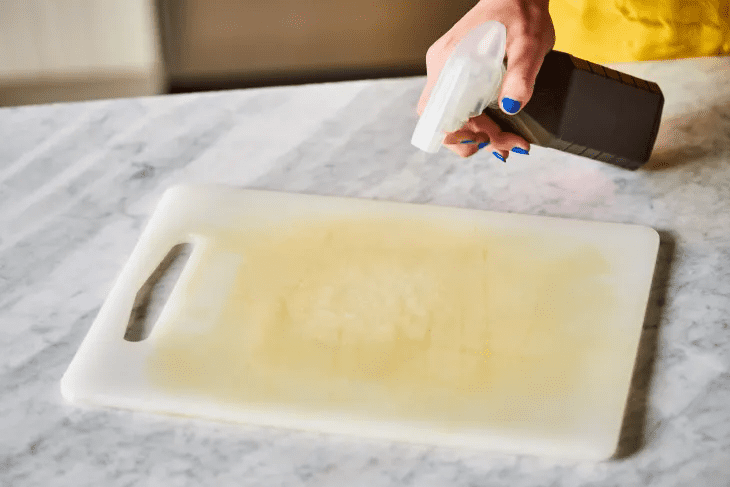
Source: The Kitchn.com
Verdict: Food safety is the most crucial factor you should consider, and wooden cutting boards have an edge in this regard. Wood boards absorb liquids that may include bacteria but they can’t survive on the surface.
Wrapping Things Up
Irrespective of your cutting board type, maintaining it is the best way to avoid the negative features of the board. If you correctly preserve the wood or plastic cutting board, you will enjoy both options. However, it usually depends on your preference.
Plastic-colored boards are the best options to save money and buy multiple boards. However, if your safety interests you more and you don’t mind spending time maintaining a board, the wooden board is a better option.
![Granite Vs. Marble Vs. Quartz Countertops [12 Differences+Pros & Cons] Granite Vs. Marble Vs. Quartz Countertops [12 Differences+Pros & Cons]](https://houseadorable.com/wp-content/uploads/2022/03/quartz-marble.jpg)
![27 Types of Cutting Boards Explained [Buying Guide Included] 27 Types of Cutting Boards Explained [Buying Guide Included]](https://houseadorable.com/wp-content/uploads/2022/12/cutting-board.jpg)
![Bamboo Vs. Wood Cutting Board [9 Differences Explained] Bamboo Vs. Wood Cutting Board [9 Differences Explained]](https://houseadorable.com/wp-content/uploads/2023/01/cutting-board.jpg)
![Is Acacia Wood Good For Cutting Boards? [Explained] Is Acacia Wood Good For Cutting Boards? [Explained]](https://houseadorable.com/wp-content/uploads/2023/01/wood-table-top-with-acacia-chopping-board-with-blur-kitchen-counter-background-is.jpg)
![What Are Kitchen Sinks Made Of ? [13 Types+Pros & Cons] What Are Kitchen Sinks Made Of ? [13 Types+Pros & Cons]](https://houseadorable.com/wp-content/uploads/2022/01/Sink-MAterial.jpg)
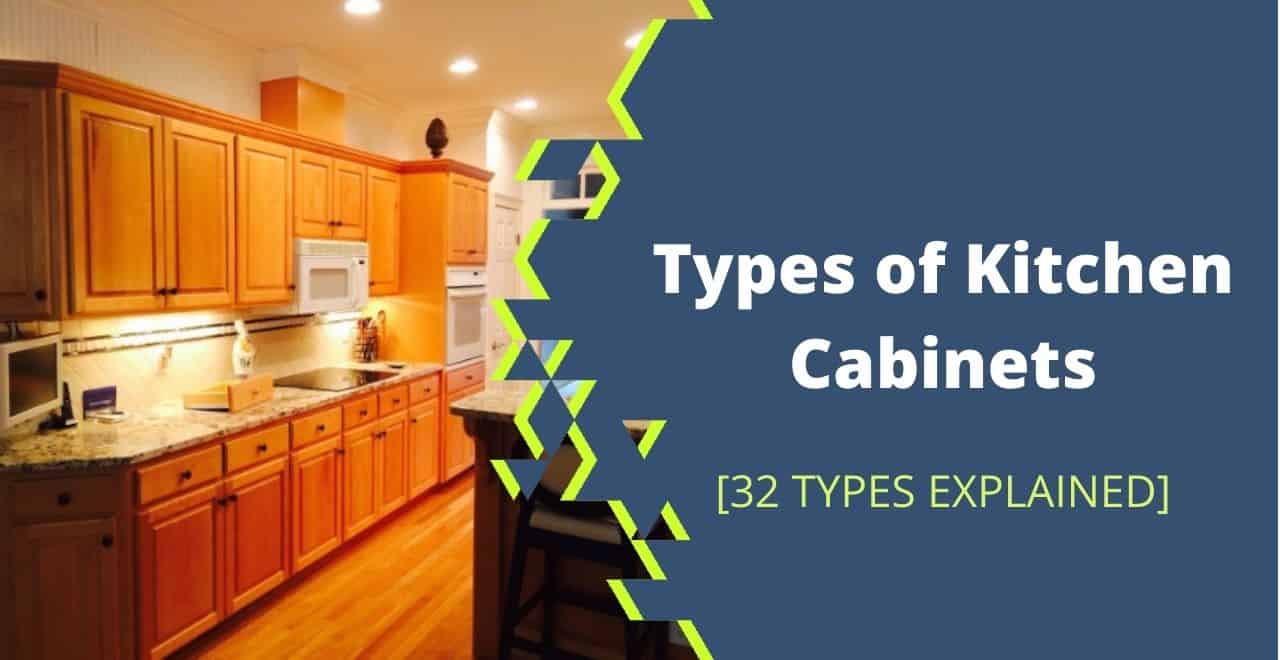
![Granite vs. Laminate Countertop [Pros and Cons+10 Key Differences] Granite vs. Laminate Countertop [Pros and Cons+10 Key Differences]](https://houseadorable.com/wp-content/uploads/2022/03/Granite-vs.-Laminate.jpg)
![Charcuterie Board Vs. Cutting Board [8 Differences] Charcuterie Board Vs. Cutting Board [8 Differences]](https://houseadorable.com/wp-content/uploads/2023/01/316322082_5650827684977137_862859335334204275_n.jpg)